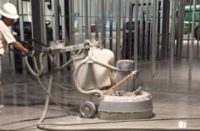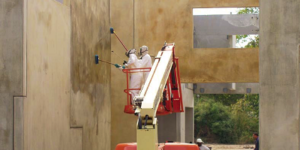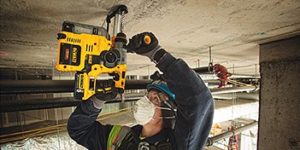It’s probably not an attitude shared by everyone, but Tom Martin, job site safety director for Diama-Shield LLC in Troy, Michigan, believes OSHA is there to help contractors.
But, then, Martin has been taking all the silica training sessions he can get since the agency’s new regulations on controlling crystalline silica dust first showed up on his radar early last year.
“Every time you attend a session with a different instructor, you catch a different point they’re focusing on,” he says. “That’s been beneficial to us in helping to evaluate our existing written plan.”
As specialists in concrete grinding and polishing, Martin says Diama-Shield has been focused on controlling dust at its job sites since opening its doors, so the new regulations that began being enforced in September weren’t entirely new to company officials.
Additionally, Michigan is one of 28 states that had adopted its own more-stringent controls before the OSHA regulations went into place.
“MI-OSHA does have more-stringent rules under some standards, but they’ve adopted the OSHA standards for crystalline silica,” he says. “We’ve utilized a lot of the engineering controls that OSHA is requiring since we’ve been in business.”
For instance, the company has always used dust shrouds, dust collection systems or water to keep dust below permissible levels.
One challenge for concrete polishers: situations where they’re not using water to cut because certain projects require a dry cut. Whether cutting wet or dry, Diama-Shield is careful to implement the engineering and work practice control methods outlined in Table 1, including dust-collection systems.
“We have done air samples on our own just to ensure we’re meeting the new permissible exposure levels,” says Martin. “We like to remain below the action level with the engineering controls, but we have done sampling to ensure that.”
He adds, “It was worth the time and effort to confirm that we’d met the standards.”
Many manufacturers and distributors say one of the hardest things for some of their customers to do to meet compliance is to develop and put in writing an exposure control plan. Not so with Martin. He says he had a plan ready to present to the company’s crews last January when they attended Diama-Shield’s annual meeting.
“It’s something we evaluate annually,” he says. “I’ve already been evaluating and updating our current written program to ensure we remain in compliance and that will be part of our annual meeting again next year.”
Additionally, every crew leader has been trained on the standard and is supplied with written instructions on what to do if dust is becoming an issue.
Martin says they aren’t the only ones keyed in on the new regulations. Some of the general contractors for whom Diama-Shield works have asked to see the company’s written program.
“I’ve created what I call a silica compliance sheet for projects where the general contractor is requesting additional information,” Martin says. “It walks through the duties of each person on that specific job, what they’ll be doing and an action plan to execute the project and prevent dust from becoming an issue.”
Bottom line, Martin sees crystalline silica as the new buzz in the industry, especially now that general contractors are asking about it. He anticipates that will only increase in 2018.
www.diamashield.com
















